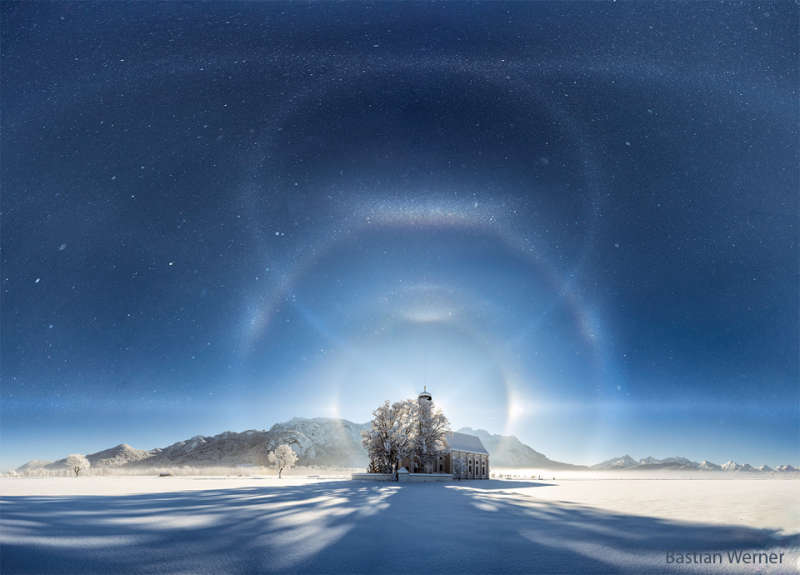
|
Credit & Copyright: Bastian Werner
Explanation:
What's causing those unusual sky arcs?
Ice crystals.
While crossing a field of fresh snow near
F÷ssen,
Bavaria,
Germany,
earlier this month, the photographer noticed that he had entered an ice fog.
For suspended water to freeze into an
ice fog
requires quite cold temperatures,
and indeed the air temperature on this day was measured at well below zero.
The ice fog
reflected light from the
Sun setting behind St.
Coleman Church.
The result was one of the
greatest
spectacles
the photographer has ever seen.
First, the spots in the
featured picture are not background stars but suspended ice and snow.
Next, two prominent
ice halos
are visible: the
22-degree halo and the
46-degree
halo.
Multiple arcs are also
visible,
including, from top to bottom,
antisolar (subsun),
circumzenithal,
Parry,
tangent, and
parhelic
(horizontal).
Finally, the
balloon shaped curve connecting
the top arc to the Sun is the
rarest of all: it is the
heliac arc, created by reflection from the sides of hexagonally shaped
ice crystals
suspended in a horizontal orientation.
|
January February March April May June July August September October November December |
| ||||||||||||||||||||||||||||||||||||||||||||||||
NASA Web Site Statements, Warnings, and Disclaimers
NASA Official: Jay Norris. Specific rights apply.
A service of: LHEA at NASA / GSFC
& Michigan Tech. U.
Based on Astronomy Picture
Of the Day
Publications with keywords: halo
Publications with words: halo
See also:
